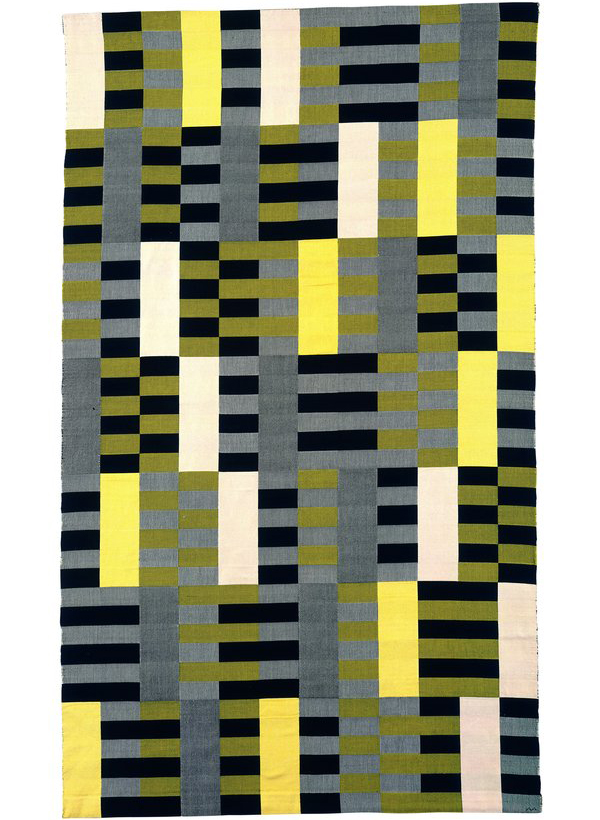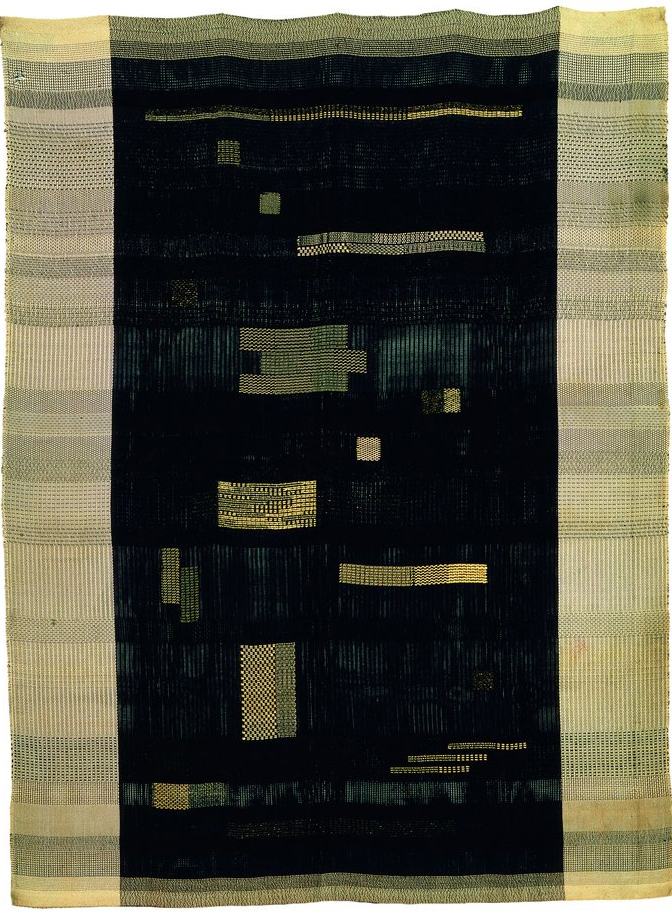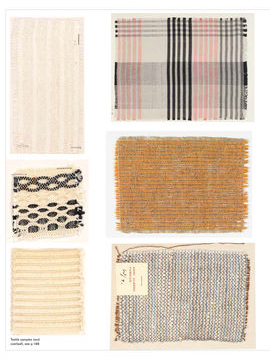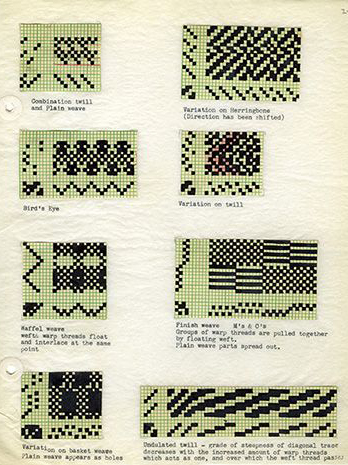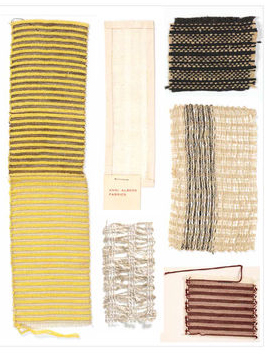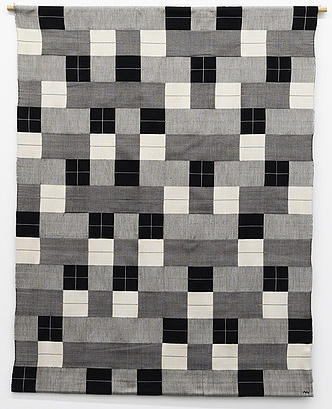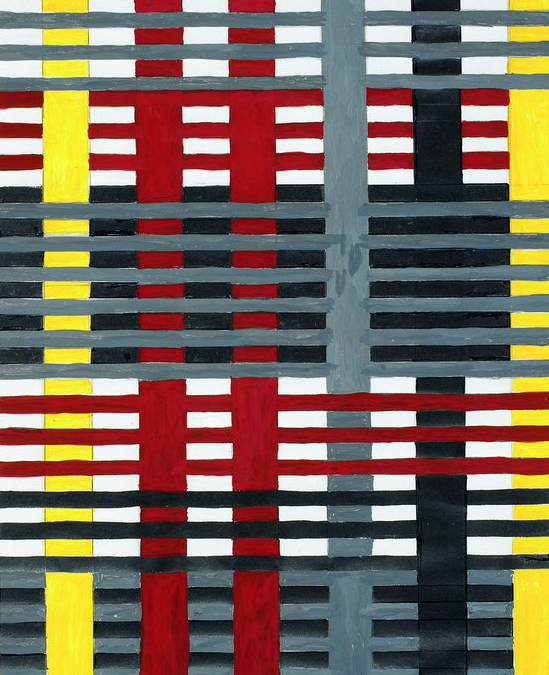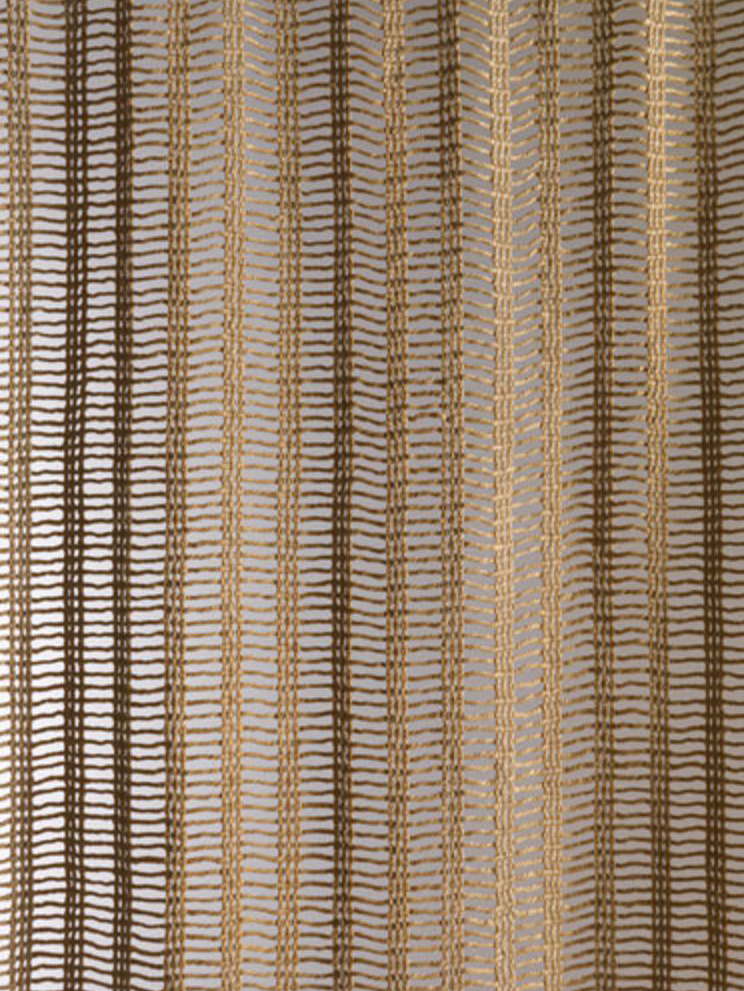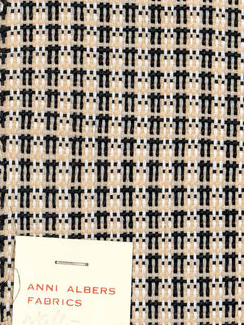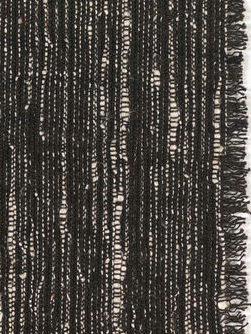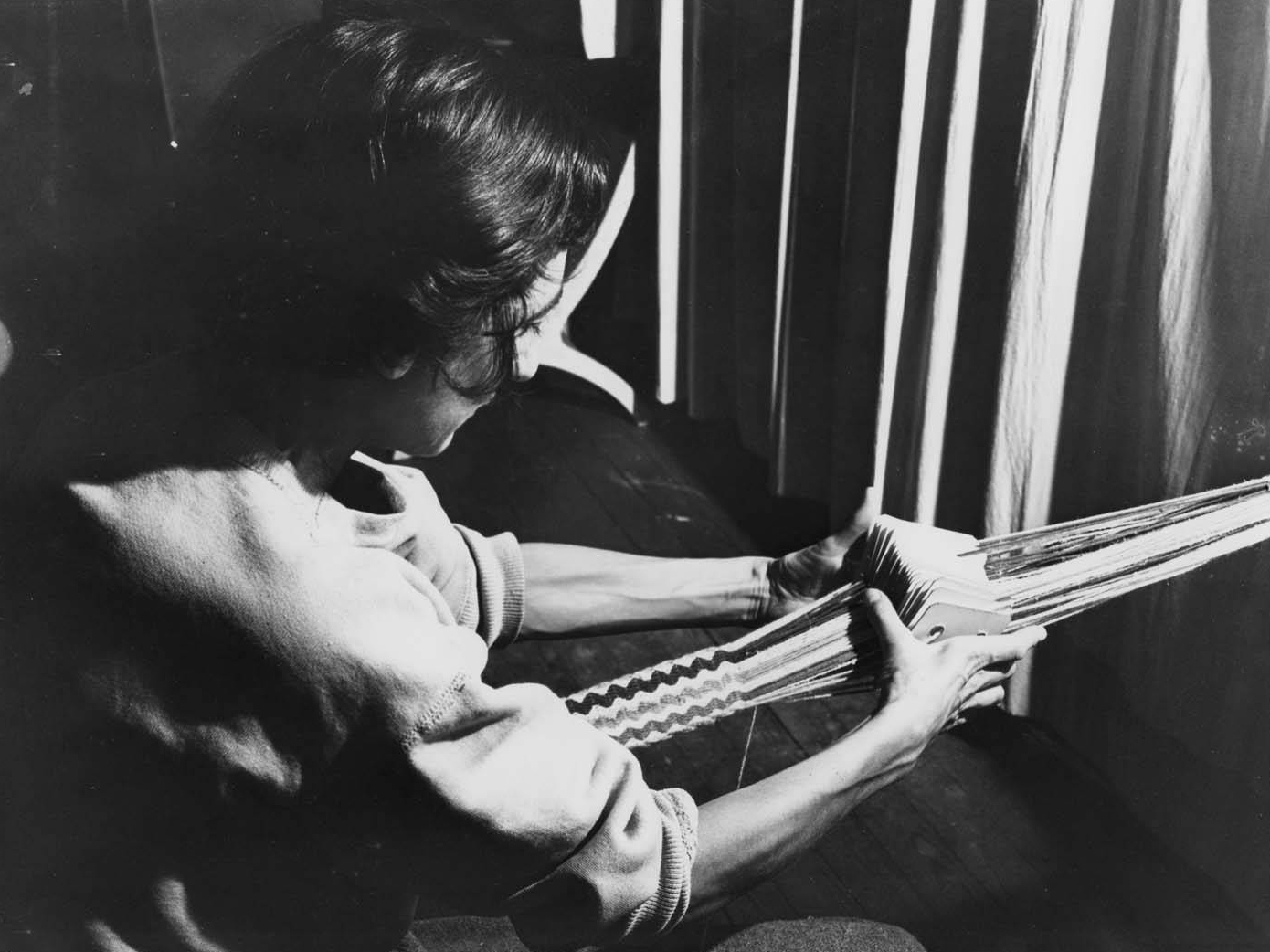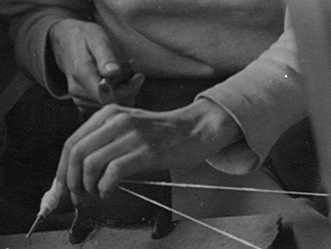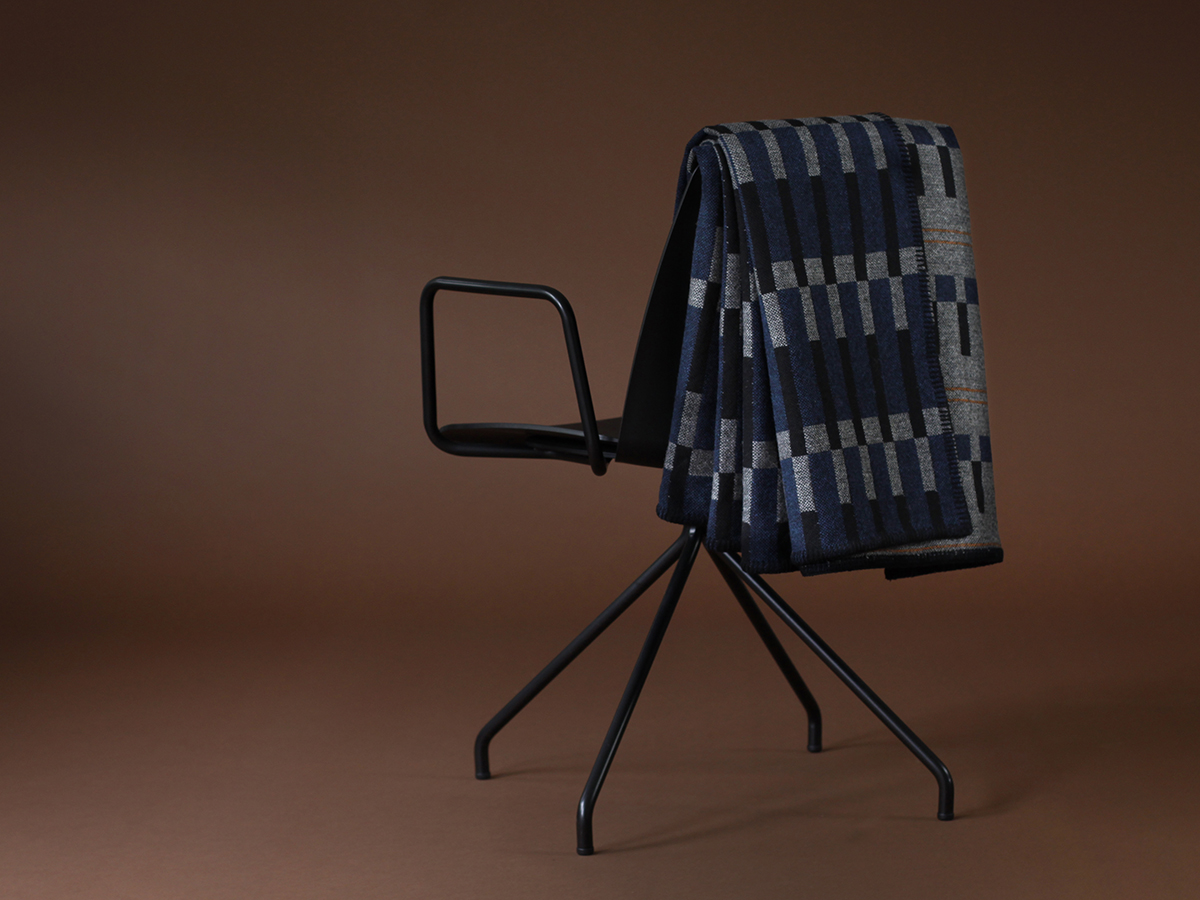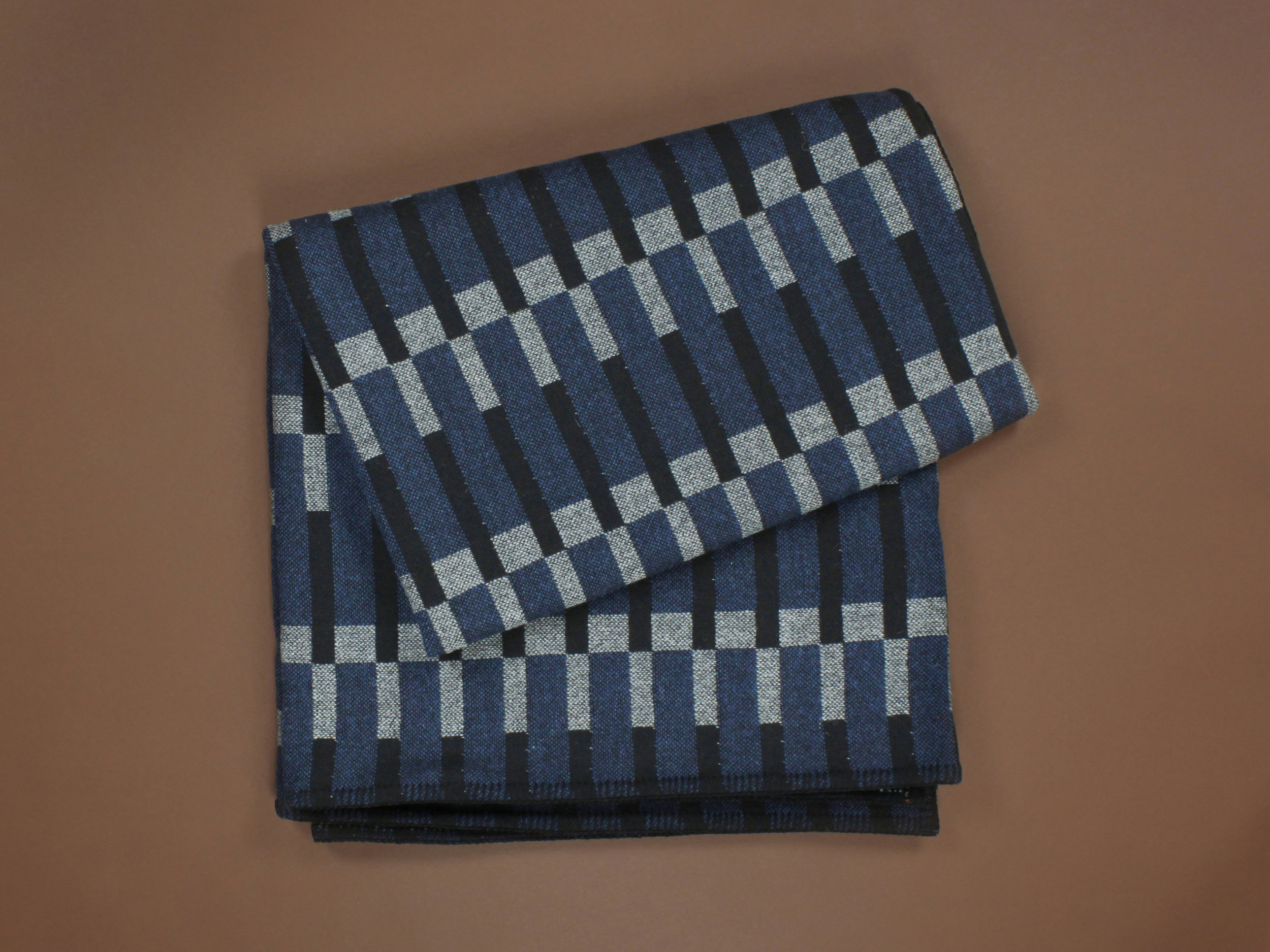Anni Albers
This week sees the opening of a major retrospective of Anni Albers at Tate Modern. It is a seismic event for the weave world - our somewhat Cinderella discipline is having a moment in the sun. But the appeal of this exhibition is much wider than the weave community. Albers’ colour, composition, materiality, pattern and texture captivate the expert, the practitioner and the layman in equal measure. Here are woven textiles given the space, gravitas and scrutiny of an art form. And the work stands up by any measure.
Much has been written about Albers - by curators, academics, critics and art historians with far more knowledge and understanding of her work and her world than I have. So, this is my unashamedly personal take on this wonderful exhibition…
The show starts and ends with a loom - here are process and technique put centre-stage. Perhaps for an exhibition of painting or sculpture this might be unnecessary, but this is the lifetime’s work of a weaver. And we are reminded throughout the show that this is weaving: with the process explored from design and weave notes (coded language to weavers, but equally appealing visually as abstract pattern); through to woven samples alongside finished pieces. These are the weaver’s equivalent of sketchbooks, cartoons, maquettes and models.
The final room includes a triptych film of weaver Ismini Samanidou working on Anni’s loom at the Albers Foundation in Connecticut. The familiar rhythmic sounds of the loom, alongside a series of yarn samples and specially commissioned woven samples for the visitor to handle are an important reminder that whilst the pieces in the exhibition are understandably too precious to touch, here is a medium that is experienced through more than just sight - touch, smell and sound are all a vital part of our experience of textiles.
Albers’ repertoire and body of work is so wide-ranging and prolific that there will be pieces here to captivate and speak to any visitor. For me personally, it is her early Bauhaus work that holds most appeal. The moment I entered the first room I felt my heart lift as I saw the beautiful monochrome block wall hanging designed by Albers in 1927 - re-woven by Gunter Stolz in 1964 (below left). I love the confidence and the graphic clarity of this and her other early block patterned wall hangings. The rhythm, scale, and palette of these pieces are so accomplished it is easy to forget that she was still a student at the time. I also loved the small gouache studies (below right) - miniature artworks in their own right - so seemingly effortlessly scaled up into large scale woven pieces.
I also found myself drawn to Albers’ commercial designs for room dividers. In particular ‘Rail’ - her linen leno fabric designed for Knoll in in 1965 (below left). Perhaps the appeal for me of these is the particular discipline and parameters of designing for industry - specifications that I engage with in my own work. I loved the pared back simplicity of these fabrics. Here are technique and materials at their most spare and economical. And for me all the stronger for that.
I have always been careful not to look too closely to other weaving for reference - I shy away from proximity for fear of too much influence, often looking instead to painting and architecture for inspiration. But this show comes at a moment for me when I feel I know my own process and work so well that I can confidently take nothing but pleasure from Albers’ weaving. And I found that to look so closely and intimately at her lifetime’s weaving was immensely moving. I felt the hand and mind of Albers in her work - from the endless inventiveness of her problem solving through to the very human sense of her fingers at work.
I leave the final words to Adrian Searle in his review for the Guardian on Tuesday:
It is rare to come from an exhibition so buoyed up, so ravished and so covetous as I did after seeing Anni Albers at Tate Modern…
…(Albers’) art sings and vibrates and keeps you looking, following patterns and meandering lines, maze-like structures, grids and colour ways. The only demand is that you look, getting up close and stepping away, going from the overall to the detail, sensing materiality as well as the optical. What a joy.
Anni Albers - Tate Modern
Cutated by Ann Coxon and Briony Fer (Tate Modern) and Maria Muller-Schareck (Kunstsammlung Nordrhein-Westfalen)
Our Dovetail blanket in Granite. Exclusive to the Tate Gallery and woven especially for the Anni Albers exhibition
Photo credits:
Tate Gallery
Josef & Anni Albers Foundation
MOMA
North Carolina State Archives

